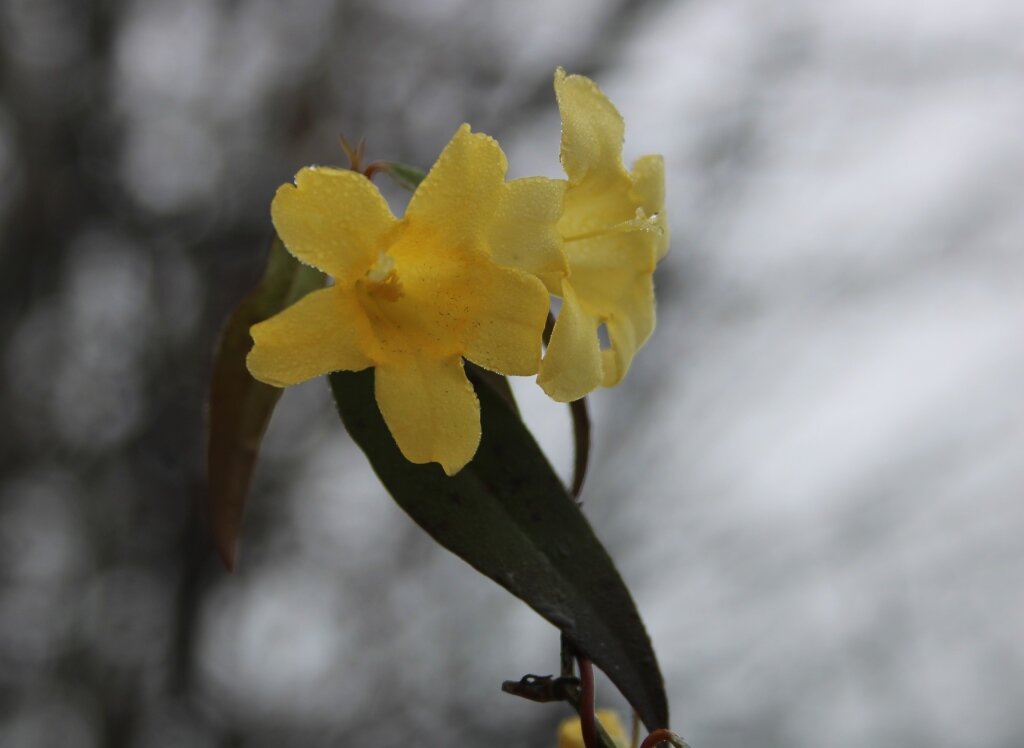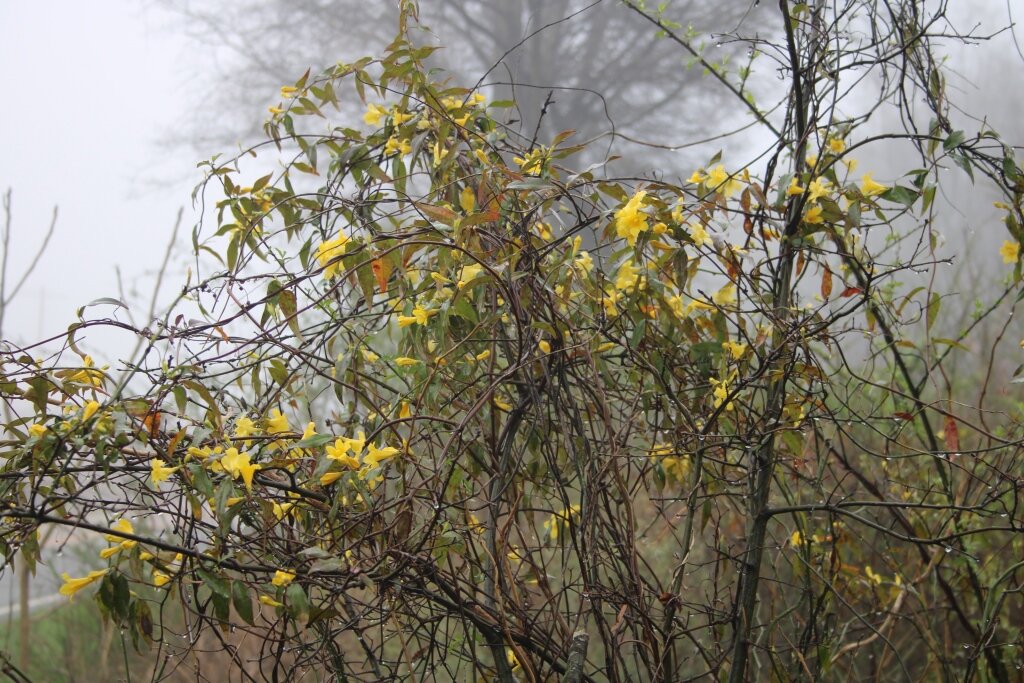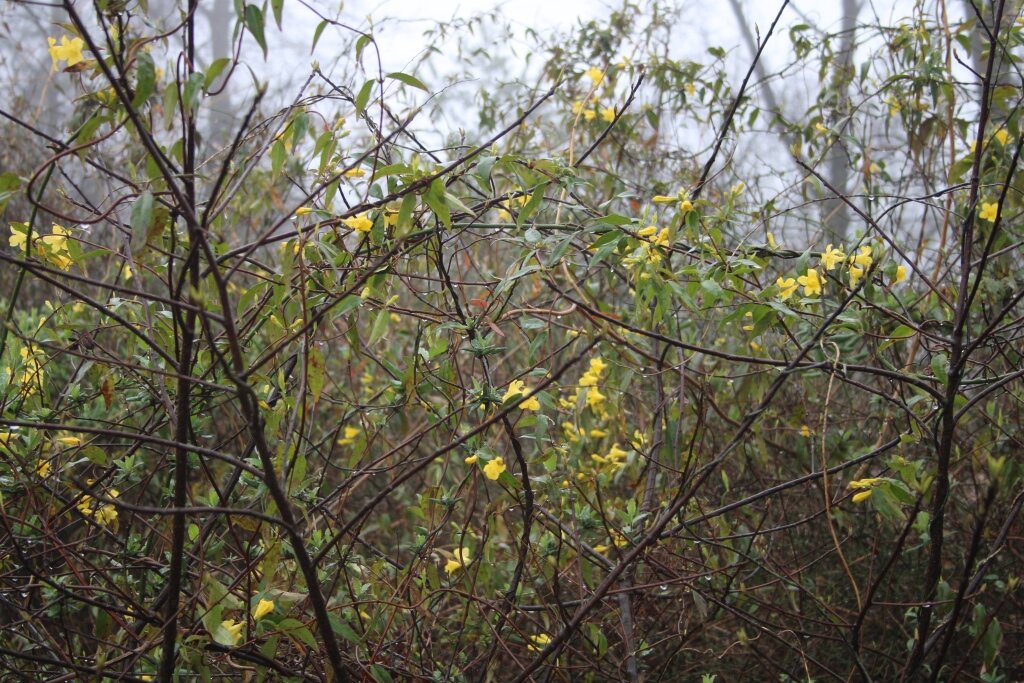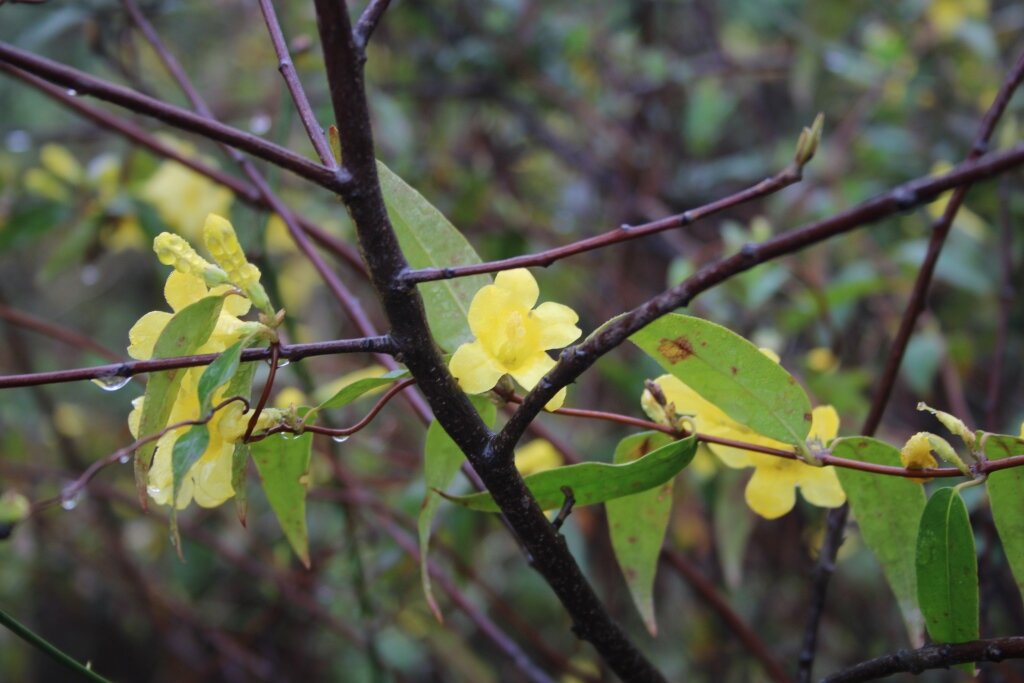Back in January, I wrote about Confederate Jasmine. Today I want to spotlight Carolina Jasmine (Gelsemium sempervirens), also known as Carolina Jessamine. This native vine bursts into bloom along roadsides in March, signalling spring is near. The fragrant, tubular flowers make a bright yellow splash as the vine scrambles over shrubs, across the ground and up trees. The vines may reach 20 feet in length. They climb by twining. Without support, it becomes more bush-like as a groundcover. It helps prevent erosion when planted on steep banks.
Carolina Jasmine will grow in sun or light shade. Flowering is much better in full sun. It is considered evergreen, but the narrow, glossy leaves tend to turn a bronze shade in cold weather. The vine will grow in zones 7-10, and is tolerant of salty air and moderate drought. The cultivar ‘Pride of Augusta’ has double flowers. Skip the fertilizer or you may have over-abundant vine and fewer leaves. If the plant gets woody with age, blooming only at its upper reaches, it can be renovated by a severe pruning. Take precautions to avoid skin exposure. The sap causes a rash in sensitive individuals (makes me break out similar to poison ivy).
All parts of the vine are toxic and can be fatal if ingested. Do not allow children to confuse it with honeysuckle. They can be poisoned by its strychnine-related toxins if they suck the nectar from flowers. Neither deer nor rabbits browse Carolina Jasmine.
Gelsemium sempervirens has a cousin, Gelsemium rankanii (Swamp Jessamine) that blooms in both spring and fall. The blooms look the same, but Swamp Jessamine is not fragrant. Both are beautiful when grown on a fence or arbor. Carolina Jasmine is the state flower of South Carolina. The accompanying photos were taken early this morning, before the fog burned off. Those yellow flowers are like drops on sunshine.



